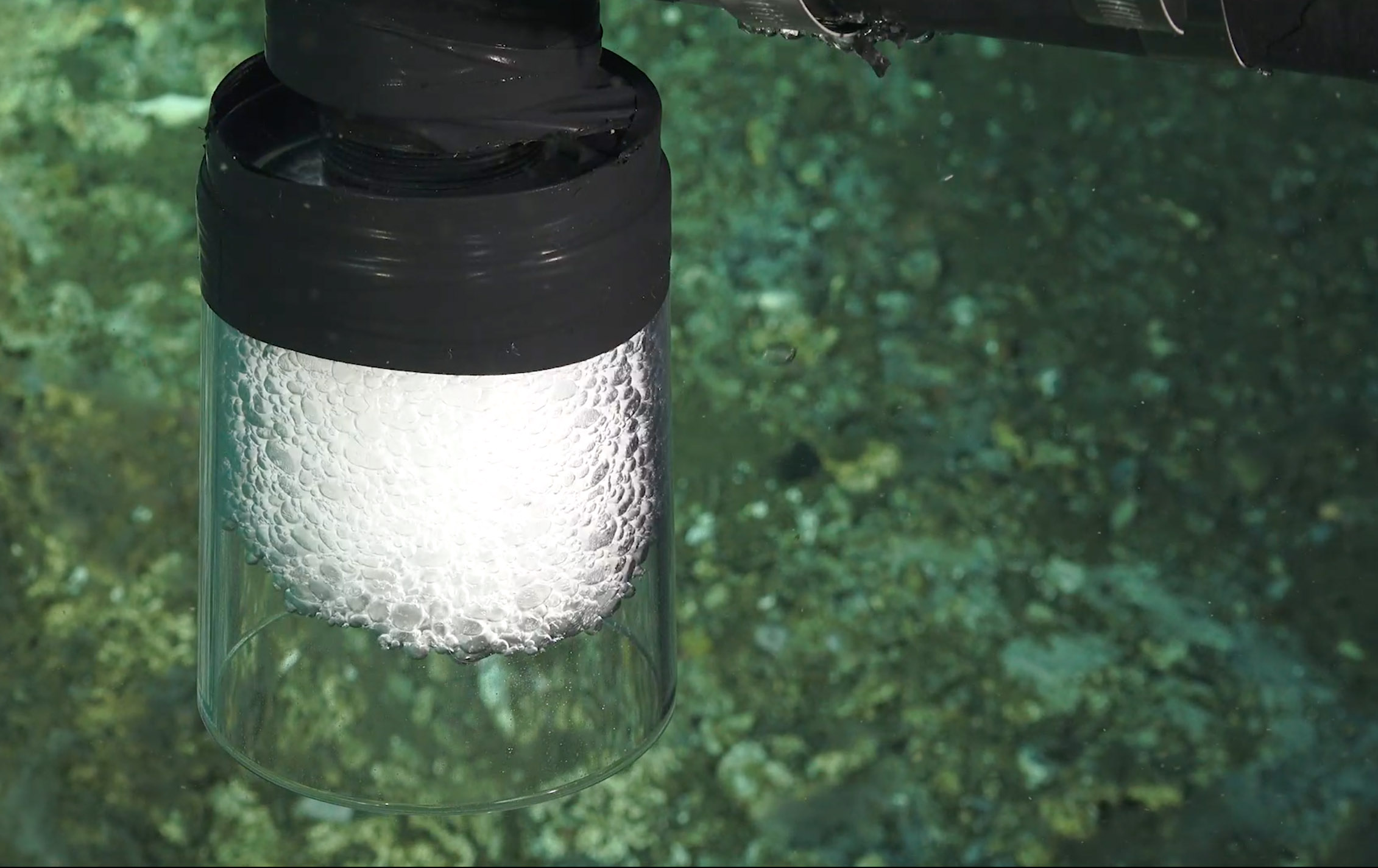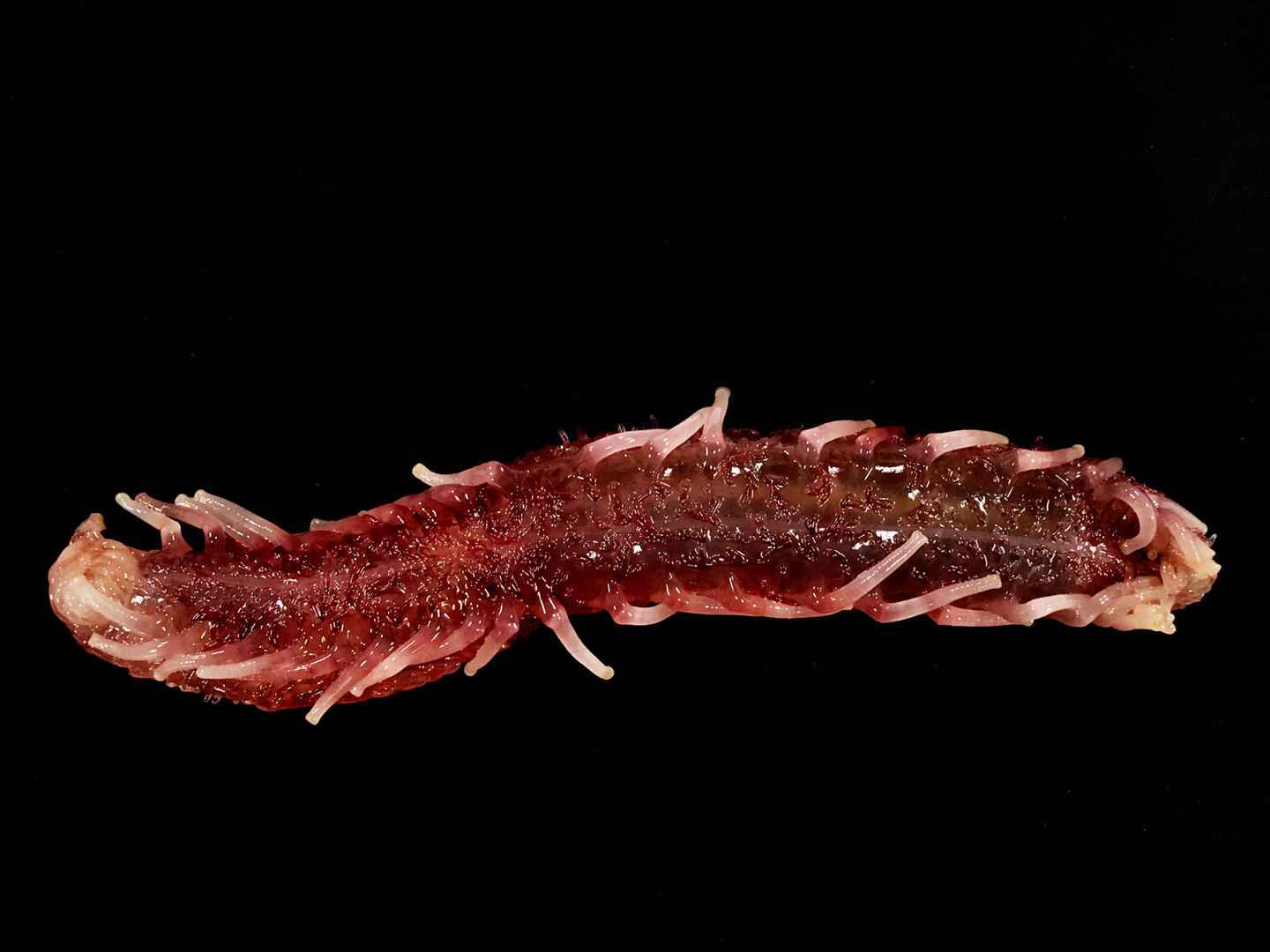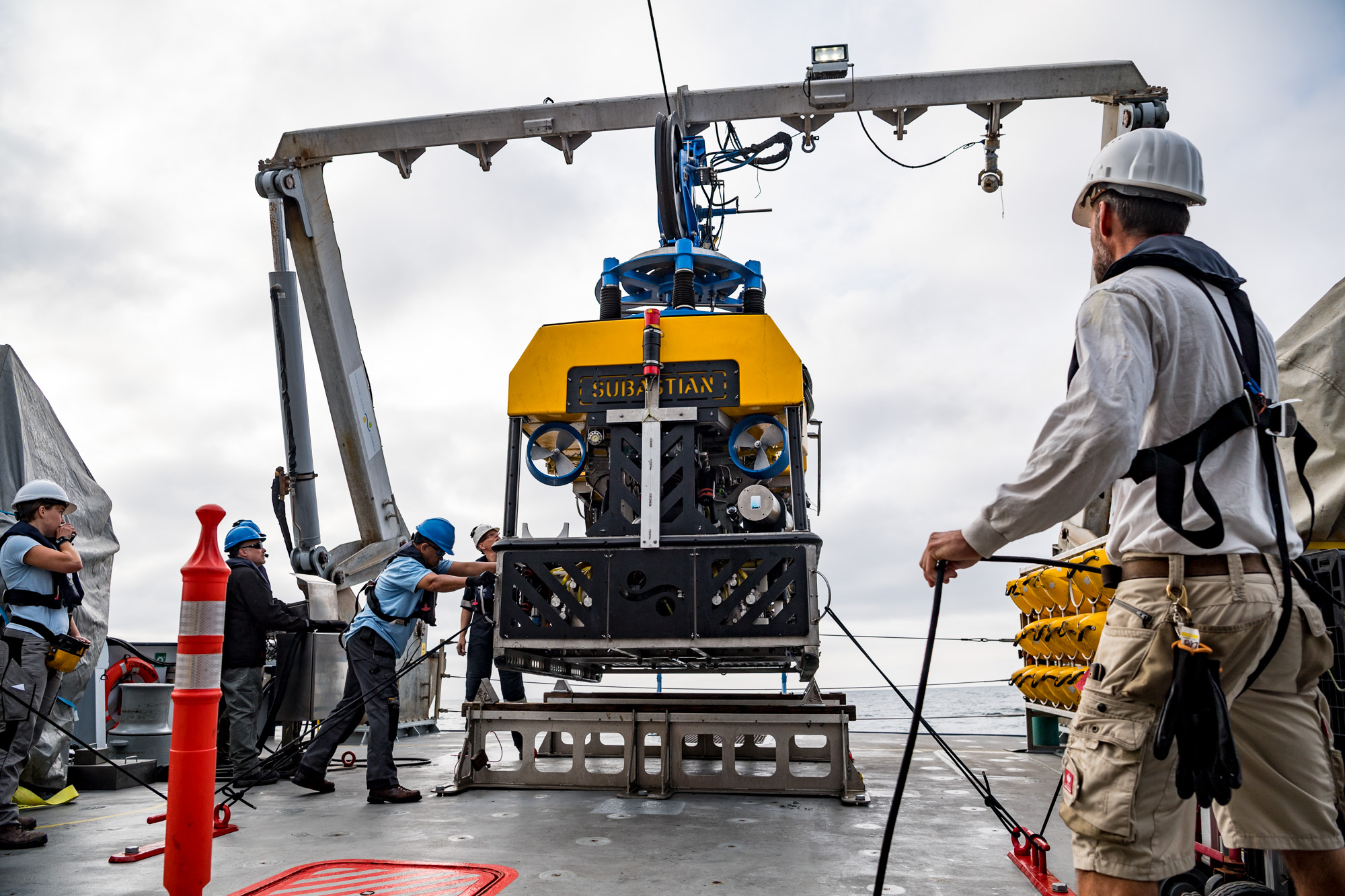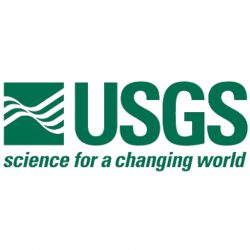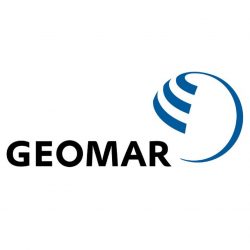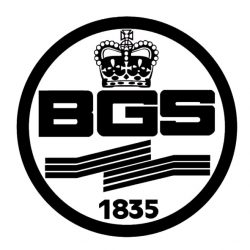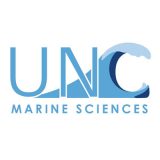Methane is a more potent greenhouse gas than carbon dioxide, but exists at far lower concentrations in the atmosphere. Many think of methane as a free-floating gas so it can be a surprise to learn that nearly one-fifth of the Earth’s methane is stored beneath the ocean’s waters in marine sediments in the form of gas hydrate. Gas hydrate is a frozen form of methane and water that naturally occurs in seafloor sediments at the high pressures and low temperatures that persist near the seafloor at water depths greater than 300-600 meters (~985 to 1970 feet). Continued warming of ocean waters could destabilize these gas hydrate deposits, releasing methane into the surrounding sediments, the overlying water column and possibly even the atmosphere. Because methane traps solar heat in the Earth’s atmosphere far more effectively than carbon dioxide, widespread release of this potent greenhouse gas from degrading marine gas hydrate deposits could be a concern if the seafloor methane emissions reach the atmosphere.
What Bubbles Up From Below
The ocean’s waters are not simply passive interfaces between the seafloor and the atmosphere. Very little methane seeping from the seafloor ever reaches the ocean’s surface due to a process known as aerobic oxidation of methane, which some scientists call a “biofilter.” Aerobic oxidation of methane is carried out by bacteria consuming methane in the water column, and oxidizing it to produce carbon dioxide. Aerobic oxidation is a critical factor in mitigating the impact of methane released from the seafloor on the atmosphere, but the resulting increase in carbon dioxide in the deep ocean could also acidify ocean waters, affecting deep sea corals and other benthic organisms that live at methane seeps. Critical knowledge gaps remain about gas hydrate degradation, seafloor methane seepage, and aerobic methane oxidation – this information has implications for the interaction of the sediment-ocean-atmosphere system with global climate change. Not only is the impact of warming ocean waters on gas hydrate deposits poorly understood, but scientists lack definitive answers about the rates of aerobic methane oxidation near seep sites, and whether this process can truly remove most of the methane from the ocean water even if rates of methane emissions increase in the future. This is precisely the challenge that Dr. Carolyn Ruppel of the U.S. Geological Survey and a collaborating team of geologists, geophysicists, biochemists, and benthic ecologists will tackle by examining a selection of the hundreds of methane seeps recently discovered on the U.S. Pacific Northwest margin north of the Mendocino Fracture Zone.
Gas hydrate is likely to degrade most rapidly and release its methane to the water column near the pressure and temperature limit for gas hydrate stability, which is ~550-700 meters (~1805 to 2300 feet) on the U.S. Pacific Northwest margin. To study the biology, chemistry, physics, and geology associated with these methane releases, the team will construct a mini-observatory at a seep site near the gas hydrate stability limit. In addition, the scientists will use ROV SuBastian to conduct surveys and collect water, gas, sediment, rock, and biological samples at seep sites along transects from shallower to deeper than the gas hydrate stability limit.
A Look Below the Ocean Surface
The rate and efficiency of aerobic methane oxidation in removing methane from the water column has been studied in other natural seep areas, as well as in response to events like the 2010 Deepwater Horizon oil spill in the Gulf of Mexico. Experiments conducted using recovered water samples analyzed in shipboard or shorebased laboratories can be affected by the changes in pressure and temperature experienced by the bacteria. This is why ROV SuBastian will be used to deploy landers mounted with in-situ incubation chambers that are designed to remain at the seafloor near a seep site for up to two weeks. These portable laboratories, designed by Dr. Charles Martens at University of North Carolina, will measure the methane oxidation rate at a seep near the limit of gas hydrate stability by periodically pumping water samples through methane-detecting lasers and past dissolved oxygen sensors. The landers will also monitor a number of environmental parameters to fully characterize the conditions under which the bacteria are carrying out methane oxidation.
Researchers not only lack a clear understanding of methane oxidation rates deep in the water column, but also have too little data to constrain the annual global input of methane to the ocean from seafloor seep sites. To address this issue, scientists study variations in methane emissions in both space (spatial distribution of seep sites) and time (short- and long-term variations in seep activity). The GasQuant II lander from the laboratory of Dr. Jens Greinert at GEOMAR in Kiel, Germany represents state-of-the-art instrumentation for such studies. ROV SuBastian will be used to deploy GasQuant II at the same upper slope seep site being studied by the methane oxidation rate landers. GasQuant II has a rotating fan sonar for tracking the timing and location of bubble bursts from the seafloor. The lander will be used in conjunction with GEOMAR’s BubbleBox, which can measure the size, shape, number and rise speed of methane bubbles emitted from a seafloor seep site.
ROV SuBastian will also be used to undertake dives up to 10 hours long to quantify the number and distribution of benthic organisms (mussels, clams, tubeworms), deep sea corals, seafloor bacterial mats, and seep-associated mobile fauna near methane emissions sites at water depths from less than 500 meters to more than 2000 meters. Dr. Amanda Demopoulos and Dr. Nancy Prouty, both from the U.S. Geological Survey, will use the real-time video from the ROV to choose locations for sampling sediments, bacterial mats, and various organisms for biogeochemical, isotopic, and genetic studies. Such data can be used to determine the environmental drivers behind feeding patterns (also known as “trophic links”) between primary producers and consumers in seep food webs. During these ROV explorations, Dr. Diana Sahy of the British Geological Survey will direct sampling of authigenic carbonates, which are special methane-derived rocks that develop near seep sites. When analyzed with geochronology techniques, these rocks yield information about the timing of methane emissions. Researchers plan to link the dates of methane emission events to major changes in the Pacific Ocean or in global climate over the past 20,000 years.
ROV SuBastian will also collect samples of gas streaming out of the seafloor at seeps located at different distances from the deformation front, which is where tectonic plates under the eastern Pacific ocean dive beneath the North American plate. This plate boundary is part of the well-known “ring of fire” that surrounds the Pacific Ocean and where earthquakes and volcanic activity occur at plate boundaries. Dr. Tamara Baumberger and her colleagues at NOAA’s Pacific Marine Environmental Laboratory will analyze the gas samples to determine the source of methane feeding the seeps and to look for gases (like helium) that can be a fingerprint for fluid circulation that involves rocks deep within this plate boundary zone.
Opportunity to Learn More
The study of seafloor methane seeps and the gas hydrate systems to which they are sometimes linked involves physics (for example, specific temperature and pressure conditions, bubble shape and emission rates), chemistry (for example, oxidation of methane in the sediments and water column), biology (for example, microbial processes that produce some of the methane and destroy most of it; benthic organisms that use methane, sulfur, or other species to power their metabolism), and geology (for example, certain sediment types; rocks produced as a result of methane-related processes). Furthermore, methane seep emissions vary in both space and time, both on the scale of a few seconds and over thousands of years. The methane released at seafloor seeps is also a critical component of the global carbon cycle, and global climate both affects these releases and may in turn be affected by methane that is able to reach the atmosphere across the sea-air interface. This expedition will address knowledge gaps related to the flux of methane and other gases from the U.S. Pacific Northwest seafloor seeps, the rate at which methane is consumed by aerobic oxidation, and the nature and distribution of benthic organisms near seep sites. Comparisons of the new data with those collected in other well-studied seep provinces (for example, the U.S. Atlantic margin) will advance understanding of global methane emissions from the seafloor and their consequences.
Data & Publications
Metadata related to the collection of samples on the research expedition can be found here.
Acoustic backscatter and XBT profiles collected by Falkor and CTD data, imagery, event logging and navigation data from ROV SuBastian are archived at MGDS.
The resulting shipboard sensor data is archived at Rolling Deck to Repository.
ADCP data is curated and archived by University of Hawaii.
- She, M., Weiß, T., Song, Y., Urban, P., Greinert, J., and Köser, K. (2022). Marine Bubble Flow Quantification using Wide-baseline Stereo Photogrammetry. ISPRS Journal of Photogrammetry and Remote Sensing, 190, doi: 10.1016/j.isprsjprs.2022.06.014. [This article has been published OPEN ACCESS].
- Veloso-Alarcón, M., Urban, P., Weiss, T., Köser, K., She, M., and Greinert, J. (2022). Quantitatively Monitoring Bubble-flow at Steep Site Offshore Oregon: Field Trials and Methodological Advances for Parallel Optical and Hydroacoustical Measurements. Frontiers in Earth Science, 10, doi: 10.3389/feart.2022.858992. [This articel has been published as OPEN ACCESS].
